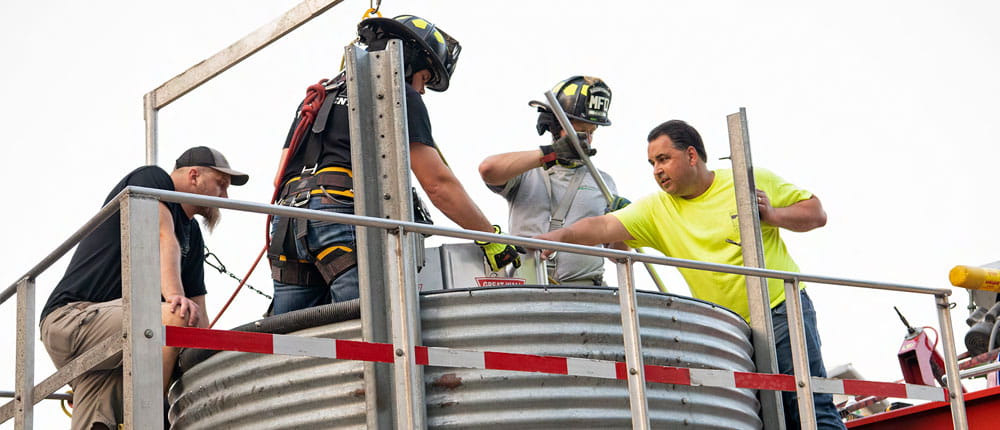The grain bin is a farm staple. It’s also one of the most dangerous. Grain bin entrapments are the most common type of confined space incident reported on farms. To help increase safety on the farm, CHS recently partnered with Nationwide to provide a grain bin rescue tube and training to the Madelia Fire Department in Madelia, Minn. Here’s what you need to know to stay safe.
1. Entering a grain bin is a two-person job: An entrant and observer
The entrant will go into the bin to complete tasks. The observer should stay outside the bin while maintaining constant communication with the entrant and be prepared to call for help if needed. Both people should wear proper protective equipment including a mask to protect from dust and mold and a safety harness.
2. Grain bin entry starts with lockout, tag out
Before entering a grain bin, make sure all equipment is turned off and locked out. The entrant should keep keys on them while in the bin, to prevent someone from accidentally turning equipment back on. Not only could someone potentially get caught in equipment, but it takes just 15 seconds to be buried up to the waist in flowing grain and just 30 seconds to be fully engulfed.
3. Out of condition grain is the number one cause of entrapment
Routinely monitoring the quality of grain in the bin is key. Out of condition grain is at higher risk for crusting or clumped masses. It can also release toxic gasses like carbon monoxide into the air.
Bonus Takeaway: Grain bins aren’t the only place to stay cautious. Farm flat storage can also be a hazard and source for entrapment as well.
By following these tips, you can stay safe and alert on the farm.




